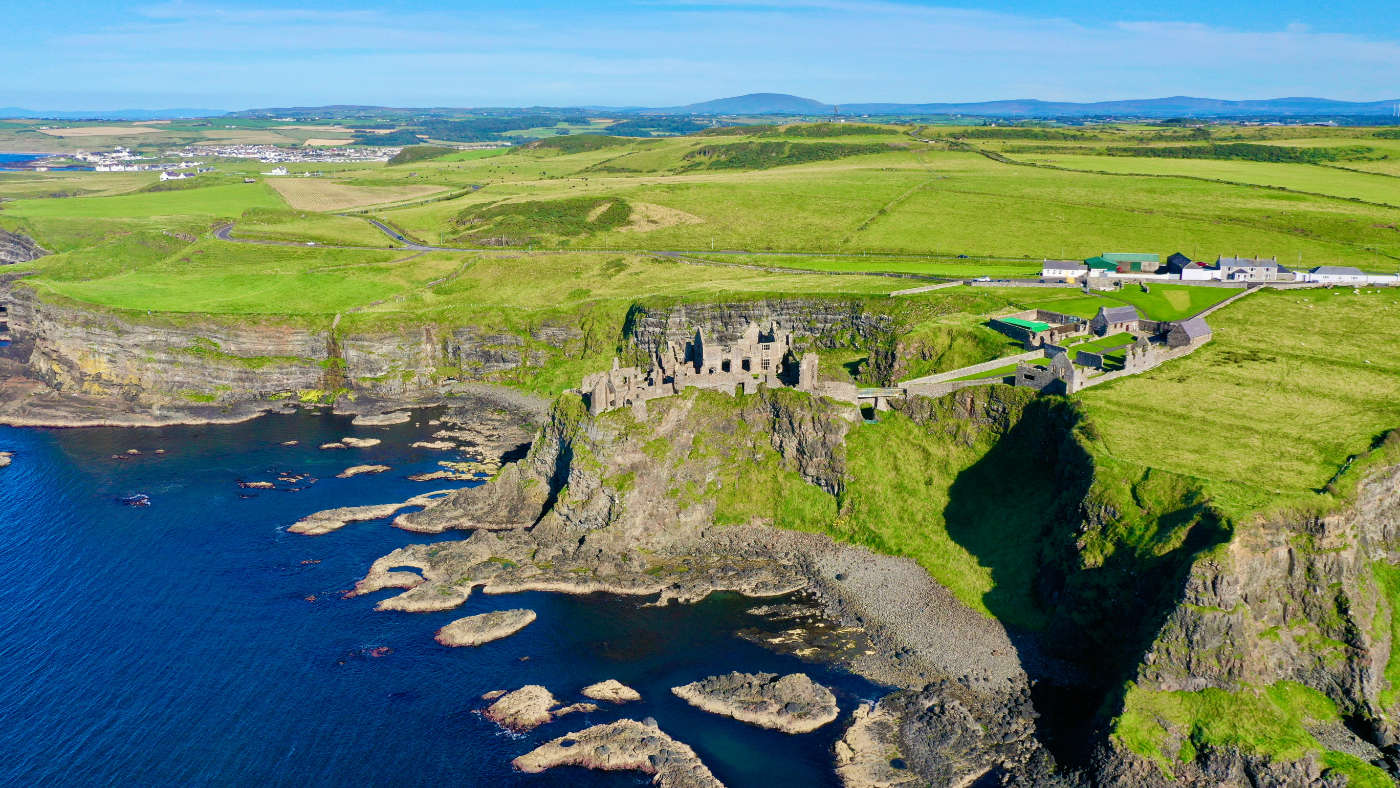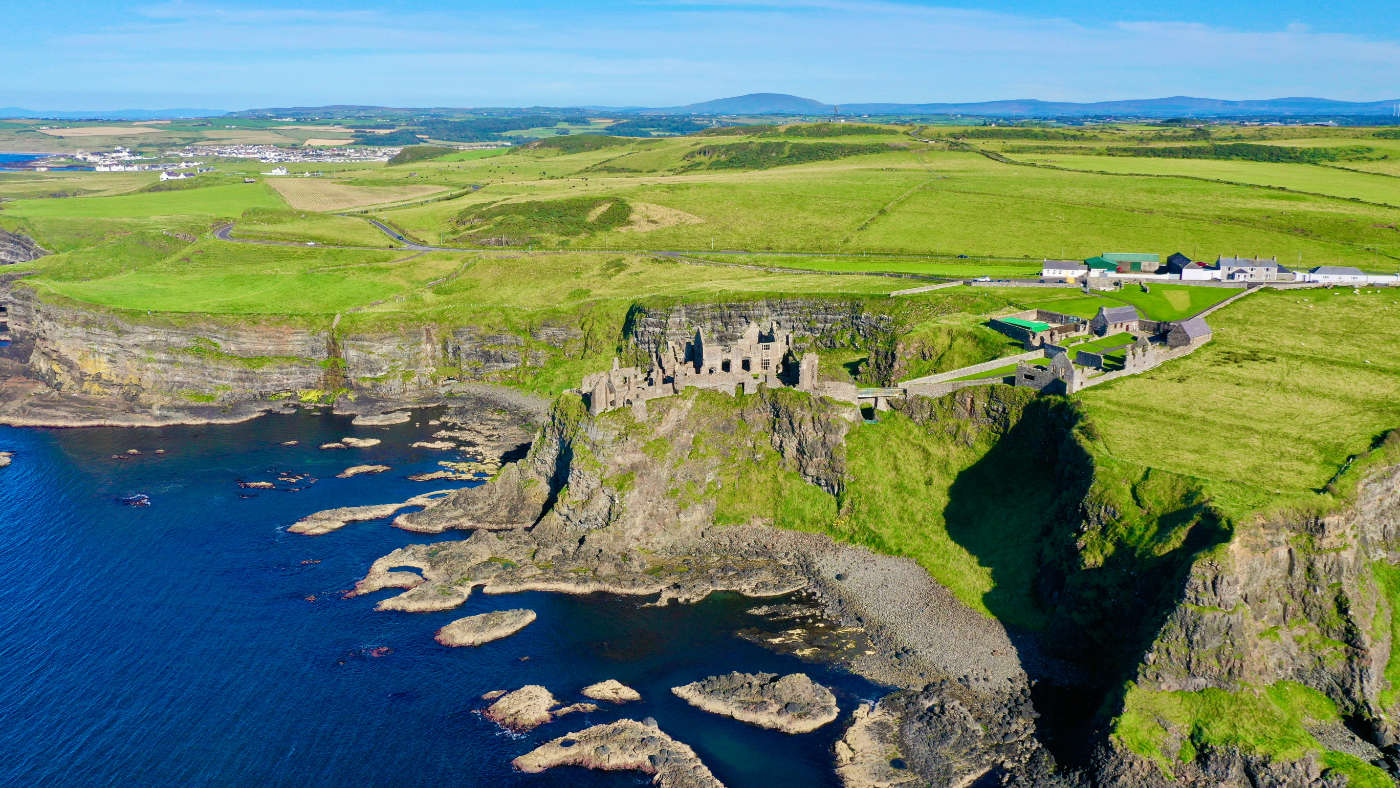
Northern Ireland weather by month
A month-by-month guide to Northern Ireland's climate.
49
°F Avg Temp.
Northern Ireland weather Monthly

Overview of Northern Ireland Weather by Month
The irish climate is often described as temperate maritime meaning it enjoys relatively mild conditions year-round due to the influence of the atlantic ocean. northern ireland weather by month typically sees limited extremes with winters being cool and summers mild. Rainfall is evenly distributed throughout the year though the western regions tend to experience more frequent showers. Winds can be gusty especially in coastal areas but snowfall is rare and usually short-lived. The frequent cloud cover contributes to the iconic lush green landscapes of the region.Spring in northern ireland marks a gradual warming with temperatures ranging between 45f and 55f by april and longer daylight hours add a sense of renewal to the season. Summer months are relatively comfortable with highs averaging 65f in july making outdoor activities popular despite occasional rain. Autumn sees a gradual cooling and a return of wetter conditions with temperatures typically falling between 50f and 60f by october. Northern ireland weather by month in autumn often highlights the vibrant colors of the season in parks and countryside. Fogs and mists are not uncommon in the early mornings during this transition period.Winters in northern ireland are relatively mild compared to other places at similar latitudes with most days averaging between 40f and 45f. Frost and icy conditions are more likely to occur inland and at higher elevations although the coastal regions often remain slightly warmer. Northern ireland weather by month in winter emphasizes its variability with cold snaps sometimes alternating with milder spells. While daylight hours are short holiday festivities and the warmth of local culture often brighten the season. Overall the region’s weather is best described as changeable so layering clothing and packing an umbrella are always a good idea when visiting.
For a complete overview of Irish weather by location and month, all the information is availabe in our Ireland Weather by Month Hub.
Seasonal Breakdown of Northern Ireland Weather by Month
Northern Ireland weather by month is heavily influenced by its proximity to the Atlantic Ocean, which surrounds much of the region. The ocean moderates temperatures throughout the year, resulting in mild winters and relatively cool summers. Coastal areas often experience higher levels of humidity and consistent breezes due to the maritime air masses. This proximity also contributes to frequent cloud cover and rainfall as moist air is pushed inland. The oceanic influence ensures that extreme temperature swings are rare, creating a generally temperate climate.
The geography of Northern Ireland, featuring numerous hills, mountains, and valleys, plays a significant role in shaping weather patterns. Higher elevations such as the Mourne Mountains may experience colder temperatures and snowfall in winter compared to lower-lying areas. These elevated regions can also create “rain shadows,” where certain areas receive less precipitation due to the blocking and lifting of air currents. Conversely, valleys may experience temperature inversions where cooler air settles at lower levels, particularly on still, clear nights. Such geographic variations contribute to subtle differences in Northern Ireland weather by month across short distances.
Inland lakes and waterways, like Lough Neagh, also have a meaningful impact on local conditions throughout the year. Large bodies of water act as heat reservoirs, warming the surrounding area slightly during winter and keeping it cooler in summer. This effect can lead to prolonged periods of fog or mist in adjacent regions, particularly during the transitional seasons of fall and spring. Waterways also interact with surface winds, creating localized breezy conditions that can shift precipitation patterns. Such diverse topographical features make Northern Ireland weather by month both variable and distinctive, despite its overall maritime climate.
At any time you can check out the weather using our Ireland AI Travel Expert tool. Ask any questions about Ireland and the AI assistant will give you all the info!
Seasonal Breakdown of Northern Ireland Weather by Month
When considering what to wear in Northern Ireland, it’s important to understand the climate’s variability throughout the year. During winter months, temperatures generally range from the low 30s to the mid-40s, so warm, layered clothing such as thermal undergarments, sweaters, and waterproof jackets are essential. Rainfall is fairly consistent, so sturdy, water-resistant footwear and an umbrella are highly recommended. Northern Ireland weather by month will also remind visitors that days are short in winter, making a warm hat and gloves necessary for outdoor activities. Dressing for comfort and protection from the elements is key during this season.
Spring and summer in Northern Ireland are often mild, with average temperatures ranging from 50F to 65F and occasional spikes slightly above. Light layers, such as breathable shirts, cardigans, and denim jackets, are ideal for these seasons. Rain is still frequent, so a compact, waterproof jacket or poncho remains a must. Northern Ireland weather by month indicates that summer evenings can feel cool, making it wise to carry an extra layer like a light sweater. Comfortable walking shoes are also essential for exploring the countryside and historic towns.
Fall sees temperatures descending once again, usually ranging from the mid-40s to low 60s, with increased rainfall as the season progresses. Dressing in layers remains practical, with warmer outerwear and perhaps a scarf to brace against cooler winds. Northern Ireland weather by month often surprises travelers with sudden rain showers, so always having a foldable umbrella or waterproof coat on hand is crucial. Boots with good traction are a smart choice, especially when walking on damp terrain. Adapting to the changing temperatures and weather ensures comfort while enjoying the scenic beauty of the region.
How to Understand Northern Ireland Weather by Month
The Ireland AI Travel Expert simplifies checking the weather for any destination or time, helping you plan more efficiently. Whether you’re curious about the current conditions, historical weather patterns, or the forecast, the AI Travel Expert provides instant and reliable answers. This tool is particularly useful if you’re planning an outdoor event, packing for a trip, or deciding on the best time to visit. For example, if you’re interested in Northern Ireland weather by month, the AI chatbot can guide you through average temperatures, rainfall levels, and seasonal trends. With just a simple query, you get tailored weather insights without the need to browse multiple websites.
You can ask the Ireland AI Travel Expert specific questions about weather history or upcoming conditions. For instance, if you’re curious about how warm June usually is or if December tends to be a rainy month, you’ll receive precise, data-driven answers instantly. Planning for a trip to a location such as Belfast? Simply input the city and desired time, and the AI delivers relevant weather updates. Whether you’re exploring Northern Ireland weather by month or seeking same-day forecasts, this tool makes preparation straightforward and stress-free.
Using the Ireland AI Travel Expert is straightforward, offering both convenience and utility. Travelers can use it to identify optimal travel dates by examining weather trends or to determine what kind of clothing to pack based on the weather forecast. The AI is also handy for event planners who need to consider weather conditions to ensure the success of outdoor activities. With its ability to analyze Northern Ireland weather by month, you can make better-informed decisions about everything from sightseeing to scheduling. This AI-powered solution saves time while ensuring you have the best information at your fingertips.
About the Ireland Handbook
The Ireland Handbook introduces an AI Assistant tailored to Irish tourism which will revolutionize trip planning for inbound visitors. Imagine having a personal travel assistant available 24/7 to answer your questions, recommend activities, and suggest accommodations based on your interests—all without the need to scour countless websites. With its vast database of local insights, cultural knowledge, and practical travel tips, the AI-powered assistant can offer customized itineraries and real-time updates, making it easier than ever to navigate Ireland's treasures. Whether you're seeking hidden gems in the countryside or must-visit landmarks like the Cliffs of Moher, the AI assistant ensures you don't miss a thing while saving time and effort. It's the ultimate tool for creating a seamless and memorable Irish adventure.
About Me
With 40 years of living in Ireland and an intimate familiarity with its rich culture, landscapes, and traditions, I bring firsthand expertise to every recommendation I make. My 20 years of experience working in Ireland’s online travel sector have given me a deep understanding of what visitors need to make the most of their trips, from hidden gems to world-famous attractions. I ensure every piece of content is both accurate and insightful, drawing on my lifelong connection to the country and my professional commitment to showcasing Ireland's best experiences.
